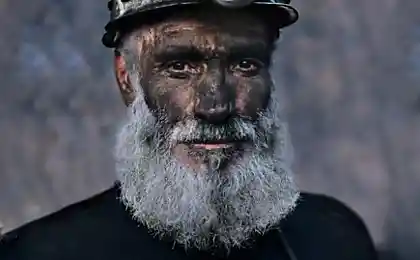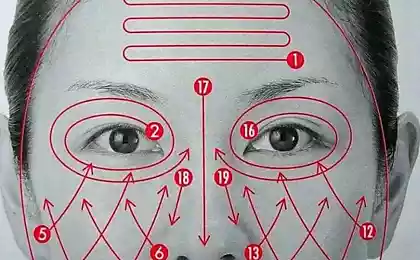3601
Restoration of guises
It is possible that looked so famous Nefertiti - the mother of King Tutankhamun.
In 2003, Egyptologist Joann Fletcher KV35YL mummy was identified as Nefertiti - "home spouse" of the ancient Egyptian pharaoh Akhenaten XVIII dynasty. Then it was reconstructed image. However, in 2010 as a result of DNA research revealed that the remains belong not Nefertiti and the other the "second half" of Akhenaten, and in combination, and his sister. True, maybe she was the wife of another pharaoh - Smenkhkare. However Egyptologists agree that the remains belong to the mother of Tutankhamun.
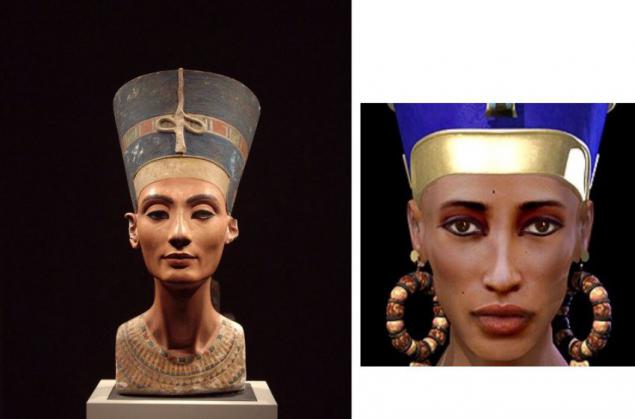
British scientists using the virtual autopsy recreated look Tutankhamun - Pharaoh XVIII dynasty of the New Kingdom, who ruled Egypt in the 1332-1323 years BC.
Scientists believe that Tutankhamun suffered from genetic diseases, and malaria, which may have led to his early death: Pharaoh died at age 19. Half of the men living in Western Europe, are descendants of the Egyptian pharaohs, and in particular, relatives of Tutankhamun, say scientists. The common ancestor of the ruler of ancient Egypt and the European men who have haplogroup R1b1a2, lived in the Caucasus about 9, 5 thousand years ago. Carriers "Pharaonic" haplogroup began migrating to Europe about 7000 years ago.
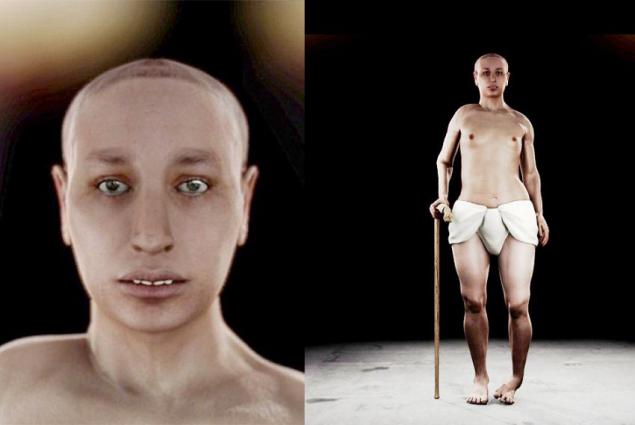
The Apostle Paul - the largest figure in world history, one of the authors OF NEW Testament and one of the founders of Christianity.
St. Paul lived in 5 - 67 years of our era. Paul created numerous Christian communities in Asia Minor and the Balkans. In 2009, for the first time in the history of scientific study was conducted sarcophagus located under the altar of the Roman Temple Basilica of Saint Paul Outside the Walls. In the sarcophagus were found bone fragments that have been subjected to a study using carbon-14 experts, who did not know their origin. According to the results, they belong to a man who lived between the I and II centuries. This confirms the indisputable tradition that we are talking about the remains of the Apostle Paul.
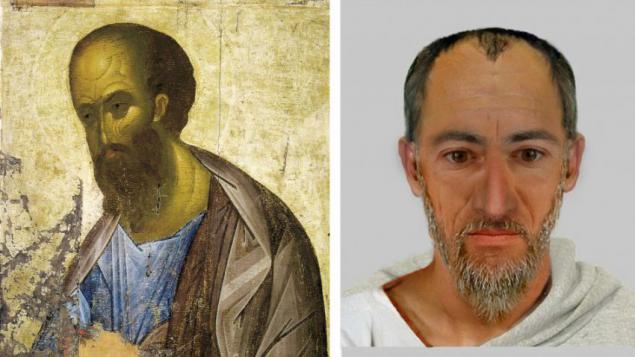
King Richard III, reconstructed on the remains discovered in the autumn of 2012, under the car park in Leicester.
Richard III - the last of the male line of the Plantagenets on the English throne, reigned from 1483rd by 1485. Recently, it was found that Richard III was killed on the battlefield, dismounted and lost his helmet. Before the death of the King of England received 11 wounded, had nine hits to the head. The absence of wounds on the bones of the hands said that at the time of death of the monarch was still in armor. Richard III was killed at the Battle of Bosworth, fighting the claimant to the throne - Henry Tudor (the future King Henry VII).
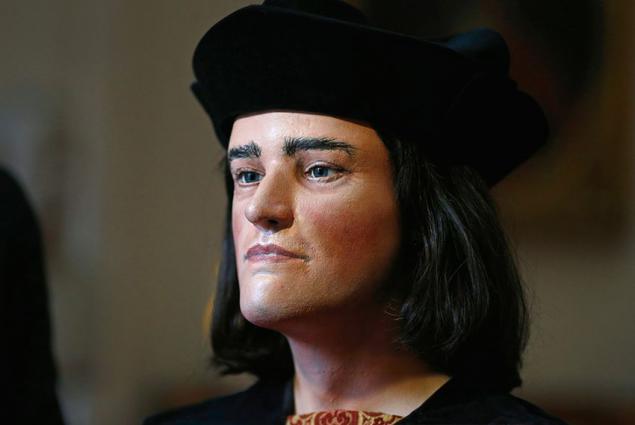
The remains of the medieval creator heliocentric worldview of Nicolaus Copernicus were found in the Cathedral of Frombork (modern Poland) in 2005. In Warsaw, Central Forensic Science Laboratory performed a computer reconstruction of the face.
In 2010, the International Union of Pure and Applied Chemistry have been assigned names, and in 2011 formally adopted the notation elements: Darmstadt, roentgenium and Copernicium (or Copernicus) - with the numbers 110, 111 and 112, respectively. Initially, for the 112th element, Copernicium, named in honor of Nicolaus Copernicus proposed a symbol Cp, then it changed to Cn.

In 2008, the Scottish anthropologist Caroline Wilkinson (Caroline Wilkinson) revolutionized the appearance of the great German composer of the XVIII century by Johann Sebastian Bach.
The remains were exhumed Bach in 1894, and in 1908 the first sculptors tried to recreate his image, guided, however, the famous portrait of the composer. Critics of the early XX century were dissatisfied with this project: they claimed that the bust with the same success can represent, for example, by Handel.
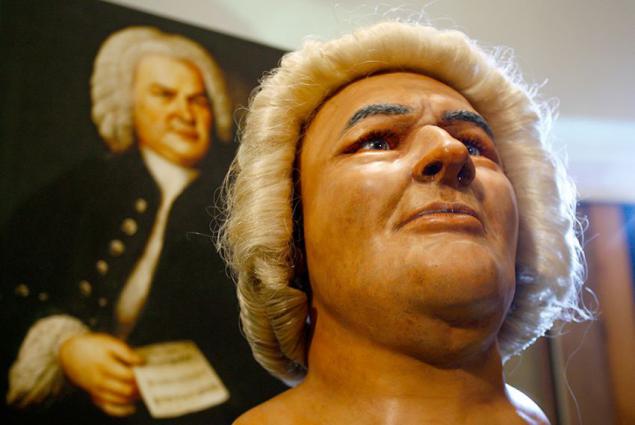
Reconstruction of the face of William Shakespeare's death mask made with the English poet and playwright.
The hypothesis of the infinite monkeys who sooner or later will print artistic creation of William Shakespeare, was tested American computer programmer Jesse Anderson (Jesse Anderson). Program-monkey succeeded in the past month to print Shakespeare poem "Complaint love» (A Lover's Complaint). However, an attempt to test the hypothesis on live monkeys failed. In 2003, in a cage for the six monkeys in the zoo Peytonskom (UK) put connected to the computer keyboard. Monkeys scored five pages of rambling text and a month later broke the keyboard.
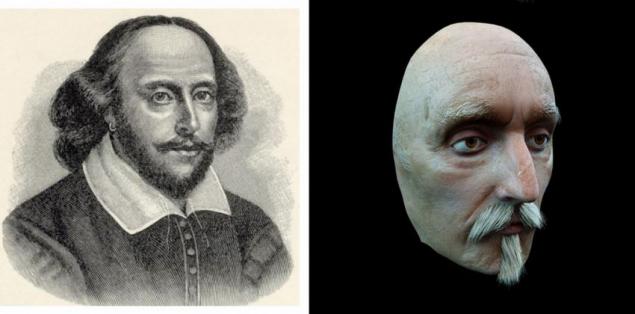
2007 Italian scientists from the University of Bologna have revolutionized the appearance of the great Italian poet abroad XIII and XIV century, Dante Alighieri.
Dante Alighieri, in the opinion of some scholars, could suffer from narcolepsy - a disease of the nervous system, accompanied by bouts of sleepiness and suddenly falling asleep. These conclusions are based on the fact that in the "Divine Comedy" of Dante with great precision reproduced the symptoms of narcolepsy and cataplexy is often accompanied her, that is a sudden loss of muscle tone.
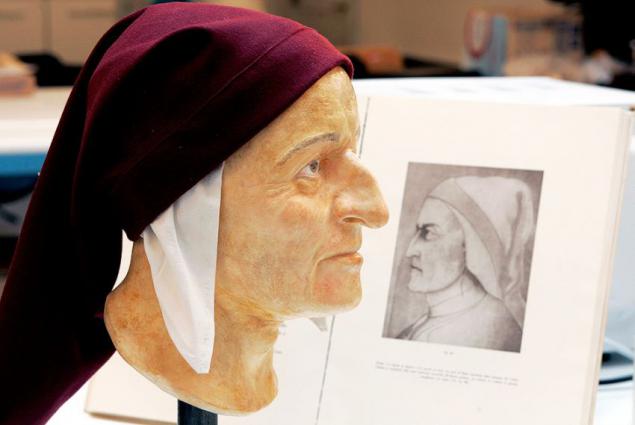
Maybe so looked Henry IV - King of France, the leader of the Huguenots, who was killed a Catholic fanatic in 1610.
In 2010, forensic scientists led by Philippe Charlier (Philippe Charlier) found that preserved mummified "head of Henry IV» is genuine. On its basis, in February 2013, these same scientists presented the reconstruction of the external appearance of the king. Nevertheless, in October 2013th another group of geneticists questioned the authenticity of the remains of the monarch of the Bourbon dynasty.
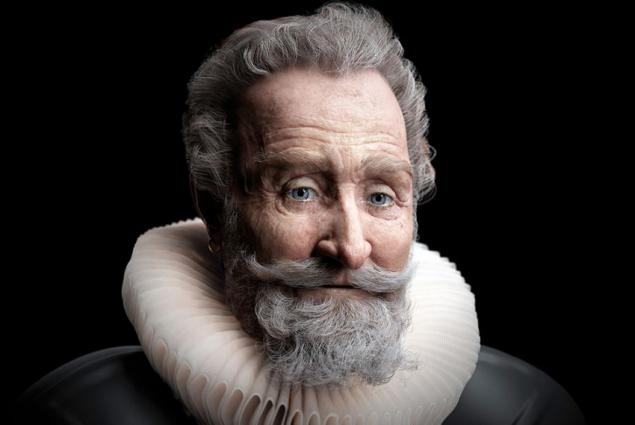
In 2009 it was reconstructed appearance of Arsinoe IV, the younger sister of the victim, and Cleopatra. Arsinoe face recreated by the standards, removed from her skull, lost during the Second World War.
Arsinoe was killed in a 41-year BC. According to the Roman historian Josephus, it was executed in Ephesus on the orders of Mark Antony and Cleopatra, who perceived stepsister threat to his power.
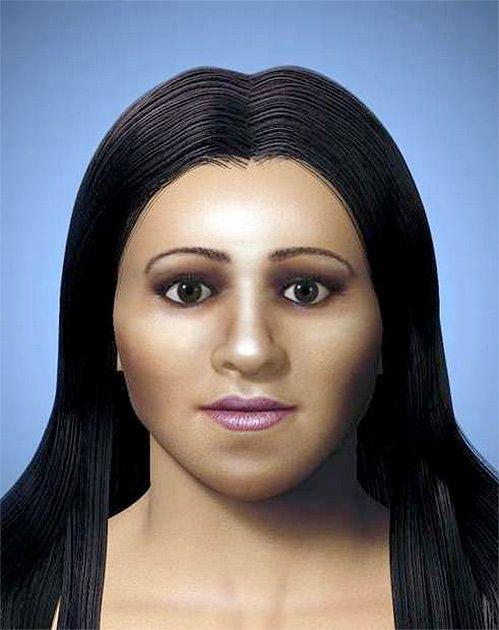
Appearance of St. Nicholas reconstructed according to the Italian professor of anatomy, obtained in 1950 during the restoration of the Basilica of St. Nicholas in Bari.
In Christianity, Nicholas of Myra is revered as a miracle worker and is the patron saint of sailors, merchants and children.
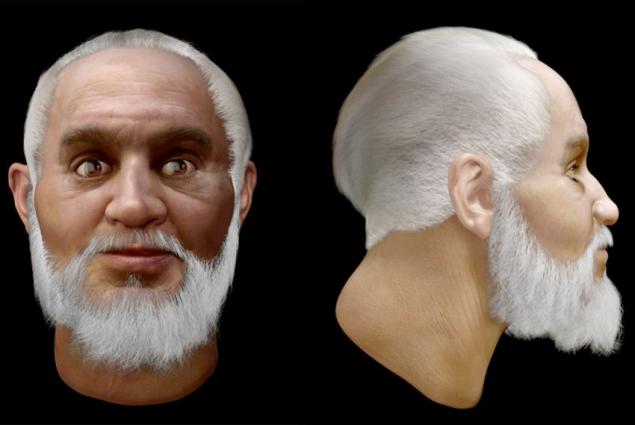
Source: terraoko.com
In 2003, Egyptologist Joann Fletcher KV35YL mummy was identified as Nefertiti - "home spouse" of the ancient Egyptian pharaoh Akhenaten XVIII dynasty. Then it was reconstructed image. However, in 2010 as a result of DNA research revealed that the remains belong not Nefertiti and the other the "second half" of Akhenaten, and in combination, and his sister. True, maybe she was the wife of another pharaoh - Smenkhkare. However Egyptologists agree that the remains belong to the mother of Tutankhamun.

British scientists using the virtual autopsy recreated look Tutankhamun - Pharaoh XVIII dynasty of the New Kingdom, who ruled Egypt in the 1332-1323 years BC.
Scientists believe that Tutankhamun suffered from genetic diseases, and malaria, which may have led to his early death: Pharaoh died at age 19. Half of the men living in Western Europe, are descendants of the Egyptian pharaohs, and in particular, relatives of Tutankhamun, say scientists. The common ancestor of the ruler of ancient Egypt and the European men who have haplogroup R1b1a2, lived in the Caucasus about 9, 5 thousand years ago. Carriers "Pharaonic" haplogroup began migrating to Europe about 7000 years ago.

The Apostle Paul - the largest figure in world history, one of the authors OF NEW Testament and one of the founders of Christianity.
St. Paul lived in 5 - 67 years of our era. Paul created numerous Christian communities in Asia Minor and the Balkans. In 2009, for the first time in the history of scientific study was conducted sarcophagus located under the altar of the Roman Temple Basilica of Saint Paul Outside the Walls. In the sarcophagus were found bone fragments that have been subjected to a study using carbon-14 experts, who did not know their origin. According to the results, they belong to a man who lived between the I and II centuries. This confirms the indisputable tradition that we are talking about the remains of the Apostle Paul.

King Richard III, reconstructed on the remains discovered in the autumn of 2012, under the car park in Leicester.
Richard III - the last of the male line of the Plantagenets on the English throne, reigned from 1483rd by 1485. Recently, it was found that Richard III was killed on the battlefield, dismounted and lost his helmet. Before the death of the King of England received 11 wounded, had nine hits to the head. The absence of wounds on the bones of the hands said that at the time of death of the monarch was still in armor. Richard III was killed at the Battle of Bosworth, fighting the claimant to the throne - Henry Tudor (the future King Henry VII).

The remains of the medieval creator heliocentric worldview of Nicolaus Copernicus were found in the Cathedral of Frombork (modern Poland) in 2005. In Warsaw, Central Forensic Science Laboratory performed a computer reconstruction of the face.
In 2010, the International Union of Pure and Applied Chemistry have been assigned names, and in 2011 formally adopted the notation elements: Darmstadt, roentgenium and Copernicium (or Copernicus) - with the numbers 110, 111 and 112, respectively. Initially, for the 112th element, Copernicium, named in honor of Nicolaus Copernicus proposed a symbol Cp, then it changed to Cn.

In 2008, the Scottish anthropologist Caroline Wilkinson (Caroline Wilkinson) revolutionized the appearance of the great German composer of the XVIII century by Johann Sebastian Bach.
The remains were exhumed Bach in 1894, and in 1908 the first sculptors tried to recreate his image, guided, however, the famous portrait of the composer. Critics of the early XX century were dissatisfied with this project: they claimed that the bust with the same success can represent, for example, by Handel.

Reconstruction of the face of William Shakespeare's death mask made with the English poet and playwright.
The hypothesis of the infinite monkeys who sooner or later will print artistic creation of William Shakespeare, was tested American computer programmer Jesse Anderson (Jesse Anderson). Program-monkey succeeded in the past month to print Shakespeare poem "Complaint love» (A Lover's Complaint). However, an attempt to test the hypothesis on live monkeys failed. In 2003, in a cage for the six monkeys in the zoo Peytonskom (UK) put connected to the computer keyboard. Monkeys scored five pages of rambling text and a month later broke the keyboard.

2007 Italian scientists from the University of Bologna have revolutionized the appearance of the great Italian poet abroad XIII and XIV century, Dante Alighieri.
Dante Alighieri, in the opinion of some scholars, could suffer from narcolepsy - a disease of the nervous system, accompanied by bouts of sleepiness and suddenly falling asleep. These conclusions are based on the fact that in the "Divine Comedy" of Dante with great precision reproduced the symptoms of narcolepsy and cataplexy is often accompanied her, that is a sudden loss of muscle tone.

Maybe so looked Henry IV - King of France, the leader of the Huguenots, who was killed a Catholic fanatic in 1610.
In 2010, forensic scientists led by Philippe Charlier (Philippe Charlier) found that preserved mummified "head of Henry IV» is genuine. On its basis, in February 2013, these same scientists presented the reconstruction of the external appearance of the king. Nevertheless, in October 2013th another group of geneticists questioned the authenticity of the remains of the monarch of the Bourbon dynasty.

In 2009 it was reconstructed appearance of Arsinoe IV, the younger sister of the victim, and Cleopatra. Arsinoe face recreated by the standards, removed from her skull, lost during the Second World War.
Arsinoe was killed in a 41-year BC. According to the Roman historian Josephus, it was executed in Ephesus on the orders of Mark Antony and Cleopatra, who perceived stepsister threat to his power.

Appearance of St. Nicholas reconstructed according to the Italian professor of anatomy, obtained in 1950 during the restoration of the Basilica of St. Nicholas in Bari.
In Christianity, Nicholas of Myra is revered as a miracle worker and is the patron saint of sailors, merchants and children.

Source: terraoko.com





